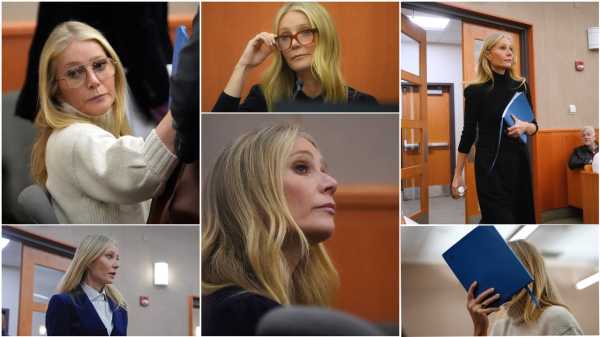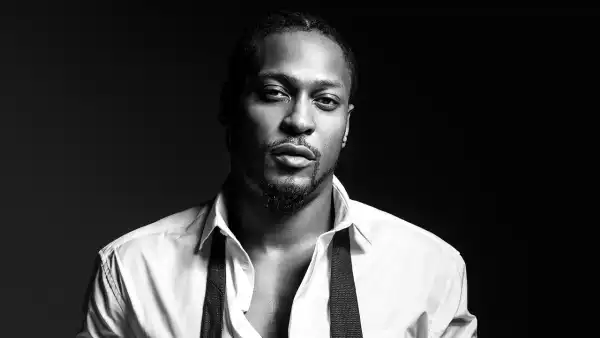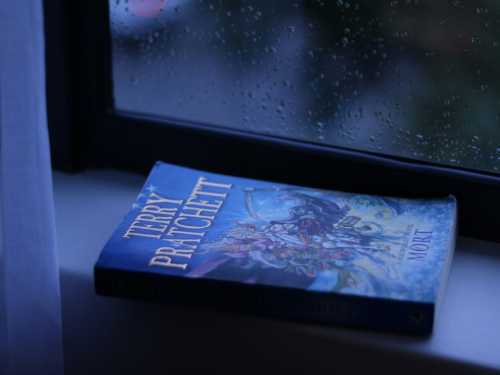
One of the lessons of adulthood is that life is hard and, as one grows older, will likely get harder. There are the enduring personal pressures: making a living, finding and keeping a mate, potentially raising children, and inevitably experiencing embarrassment, grief, and death. And then there are the larger issues, whose spectres grow more haunting with every passing year: war, inequality, political strife, global economic collapse, environmental apocalypse. Taken together, it’s enough to drive anyone to the brink. So it is perhaps no wonder that one of the most-watched news events of late has been Gwyneth Paltrow’s trial, in Utah civil court, for a luxury-ski-resort accident from her past. It’s as if we were all waiting to exhale, and Paltrow finally gave us permission.
For those who have somehow managed until now without this precious diversion, which kicked off last Tuesday and is expected to draw to a close on Thursday, here are the basics: in February, 2016, Paltrow, who is fifty, was vacationing with her family at the Deer Valley Resort in Park City, Utah—a site of the 2002 Winter Olympics, and the location of Chelsea Clinton’s eighteenth-birthday celebration, in 1999. Terry Sanderson, a seventy-six-year-old retired optometrist, was at the resort at the same time as Paltrow, and in 2019 he filed a lawsuit accusing her of having committed a “ski and run.” According to Sanderson, he was skiing on the beginner slope when he was struck from behind by the Oscar-winning actress and the founder of Goop, who did not stop to help him because she was distracted by her kids. Sanderson says that he suffered various physical and mental injuries from the collision (broken ribs, brain trauma) and originally sought 3.1 million dollars in damages, though that sum has since been reduced to three hundred thousand dollars.
More than ninety-five per cent of civil cases settle. However, Paltrow not only has let this case go to trial but has counter-sued Sanderson for the symbolic sum of one dollar, plus attorney fees. She claims that Sanderson was the one who crashed into her, and that, contrary to his version of events, she was the skier further down the slope, who should have been given the right of way, according to slope etiquette. During the trial, Paltrow’s legal team has tried to paint Sanderson as an opportunist looking for fame and a buck, and, moreover, one whose physical and mental ailments might be unrelated to the crash. Sanderson’s lawyer, meanwhile, has attempted to characterize Paltrow as an out-of-touch star who is used to hobnobbing with the likes of Taylor Swift and cares not for whatever hurt she might deal the little people. (Although, occasionally, the lawyer herself seems a bit Goop-struck.)
Celebrity trials are relatively frequent, and they are often media circuses. In the past year alone, there have been Harvey Weinstein’s second sex-crimes trial, in Los Angeles (he was found guilty on three out of seven charges); the rape trial of “That ’70s Show” actor Danny Masterson (it ended in a mistrial, and he will be retried); and then, of course, the biggest press-spectacle trial of 2022, in which Johnny Depp alleged that his ex-wife, Amber Heard, defamed him in a Washington Post op-ed, and was awarded fifteen million dollars in damages (the amount was much reduced in an eventual settlement). For plenty of observers, following these court cases, with their focus on the uglier and more violent aspects of power, has likely been depressing, if not traumatizing. And while the Paltrow trial is not completely stake-less—money might change hands, and, in some vague sense, reputations are on the line—it is, by comparison, a low-pressure skirmish duked out among the wealthy, which we can, for once, enjoy with minimal guilt. Of course, Sanderson’s claims of mental and psychological decline, thought not conclusively proved to be linked to the accident, are no laughing matter; and yet the plaintiff’s legal team’s emphasis on details such as his inability to enjoy wine tastings following the collision made me think of the type of trial that might be better featured in a “Legally Blonde” sequel.
The popularity of celebrity trials can be explained, in part, by a widespread fascination with seeing a star at her lowest—her personal life, typically kept so tightly under wraps, unravelled for the world to see; the perfectly made-up face covered, for once, with mascara tear streaks. But any semblance of relatability is completely absent from the Paltrow trial, which is why it makes for such an engaging watch. The actress has unabashedly leaned into every stereotype that has ever been used to label her, showing up to court, day after day, impeccably turned out in well-cut garments by leading designers, in shades of taupe, ivory, slate, and olive. (There has been some disagreement online over whether that cream sweater she wore on the trial’s first day was a six-hundred-dollar number from Goop’s own G. Label, or whether it was likely an even-pricier option from the Olsens’ high-end The Row line.)
Though Jewish on her father’s side, Paltrow, who is blond and slim, reads as the ultimate Wasp. Over the years, she has never claimed to be anything but a very wealthy, very well-born white woman who went to Spence, and online roundups of her out-of-touch quotes have been perennially reliable content workhorses. Only last week, she faced backlash after speaking on a podcast about her daily diet, which, coming from the founder of a wellness company that has been accused of trafficking in overpriced snake-oil-ish self-optimization remedies, was unsurprisingly extreme, and seemed to mostly consist of fasting punctuated by thimblefuls of bone broth and coffee. But as Paltrow herself has said, in 2009, “I am who I am,” adding, with a fairly rare candor, “I can’t pretend to be somebody who makes twenty-five thousand dollars a year.”
This attitude is surely annoying, as is Paltrow’s hawking of “feel the connection” jade yoni eggs and seven-hundred-dollar “blessedly minimal” leather tank tops. (It’s also predictably in line with her endorsement last year, for Los Angeles mayor, of mall billionaire Rick Caruso, who unsuccessfully ran on a law-and-order platform to “clean up L.A.”) But, at a time when so many mainstream figures seem obsessed with appearing of-the-people despite being anything but, there is something admittedly refreshing about Paltrow’s cards-on-the-table approach. (As the hosts of the culture podcast “How Long Gone” have noted, she’s taking us back to “a different era of celebrity,” when stars didn’t bother acting as if they were just like us.)
With her Greenwich-mom-drinking-spiked-hot-cocoa-at-the-lodge getups, Paltrow appears the picture of après-ski chic. If anyone knows about slope etiquette, her looks seem to say, it would be me. And her on-the-nose insistence on playing the part is comedy gold. She must be fully aware of how she comes across, and chooses to perform her diva role to the hilt, taking it to the level of Ryan Murphy-esque high camp. On Tuesday, for instance, as the Daily Mail reported, Paltrow “wore black leather culottes, a pink blouse with an 80s-style oversize necktie and sat with her lawyers sipping green juice from a bottle.” No notes! Paltrow has largely left the screen behind, but she is, after all, still an actress, and parts of her testimony feel like they could have been stripped from “The White Lotus,” “Triangle of Sadness,” “Succession,” or another satire of the ultra-wealthy. Watching Paltrow purse her lips gravely after being asked whether the collision deterred her from enjoying her vacation, a question to which she responded with the words “Well, I lost half a day of skiing” made me want to grab my popcorn. ♦
Sourse: newyorker.com






